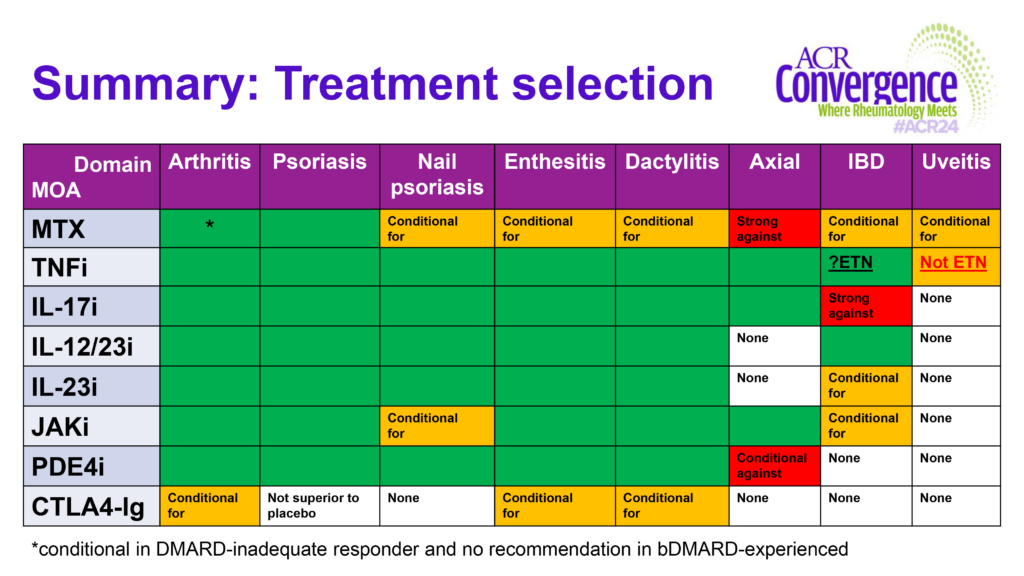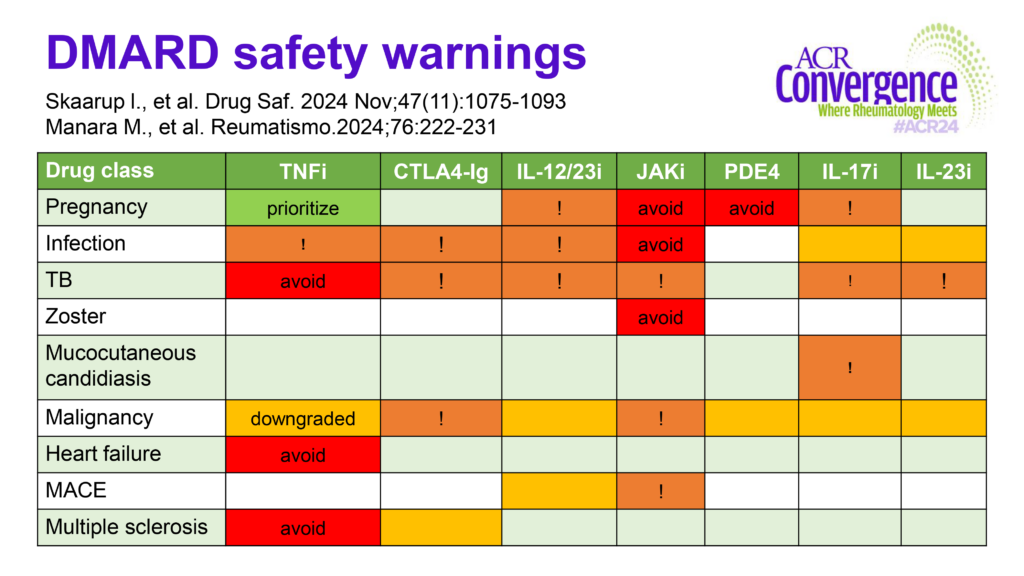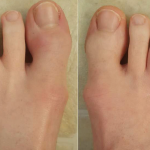3. Enthesitis. “The agreement between clinical and sonographic enthesitis is low overall, and it’s slow to respond to treatment,” Dr. Orbai noted.4 A recent post-hoc analysis of secukinumab (IL-17i) vs. adalimumab (TNFi) for enthesitis showed similar efficacy and time to resolution, with a median time to resolution of 85 days.5 Treatment recommendations mirror those for dactylitis above.
4. Psoriasis & Nails. Dr. Orbai highlighted a 2023 Cochrane review that helped identify the most effective bDMARDs for skin disease. IL-17i, IL-23i and infliximab (an intravenous TNFi) cleared skin most efficaciously.6
Dr. Orbai noted, “I also want you to be aware of studies looking at bDMARD choice and the onset of PsA in patients with psoriasis.” A retrospective cohort study showed a lower hazard ratio for the development of inflammatory arthritis in patients with psoriasis treated with IL-23i than for TNFi and IL-17i.7 However, ongoing studies are needed to definitively determine if certain bDMARDs can delay (or better yet, prevent) the development of PsA in people with psoriasis.
5. Peripheral Arthritis. “The common stem for inflammatory arthritis is going to be a TNFi, IL-17i, IL-23i or JAKi,” Dr. Orbai noted. Conventional synthetic DMARDs like methotrexate may also be useful but are not necessarily always first-line options.
6. Symptoms & Life Impact. Lastly, we can’t forget that treatment success is dependent on both suppressing inflammation and managing the patients’ experience. Patient pain, fatigue, stiffness and functioning are additional factors to consider.
Which Biologic to Choose?
So when all is said and done, which bDMARD should we use choose first? Dr. Orbai offered, “Consider a patient’s worst domain, as well as each specific domain of disease that’s involved. Then, aim for the maximum domain coverage and the most effective bDMARD choice.”
Even after identifying a patient’s disease domains, a lot of treatment options may remain. “A good way to narrow options for a patient is based on DMARD safety warnings,” Dr. Orbai noted. Some drugs confer higher risks to certain patients than others, so aim to maximize benefit while minimizing risk.
Dr. Orbai was kind enough to share two amazing tables from her talk that “took a long time to make.” Figure 1 divides treatment options up by disease domain and combined recommendations from EULAR and GRAPPA, and Figure 2 summarizes safety concerns.





